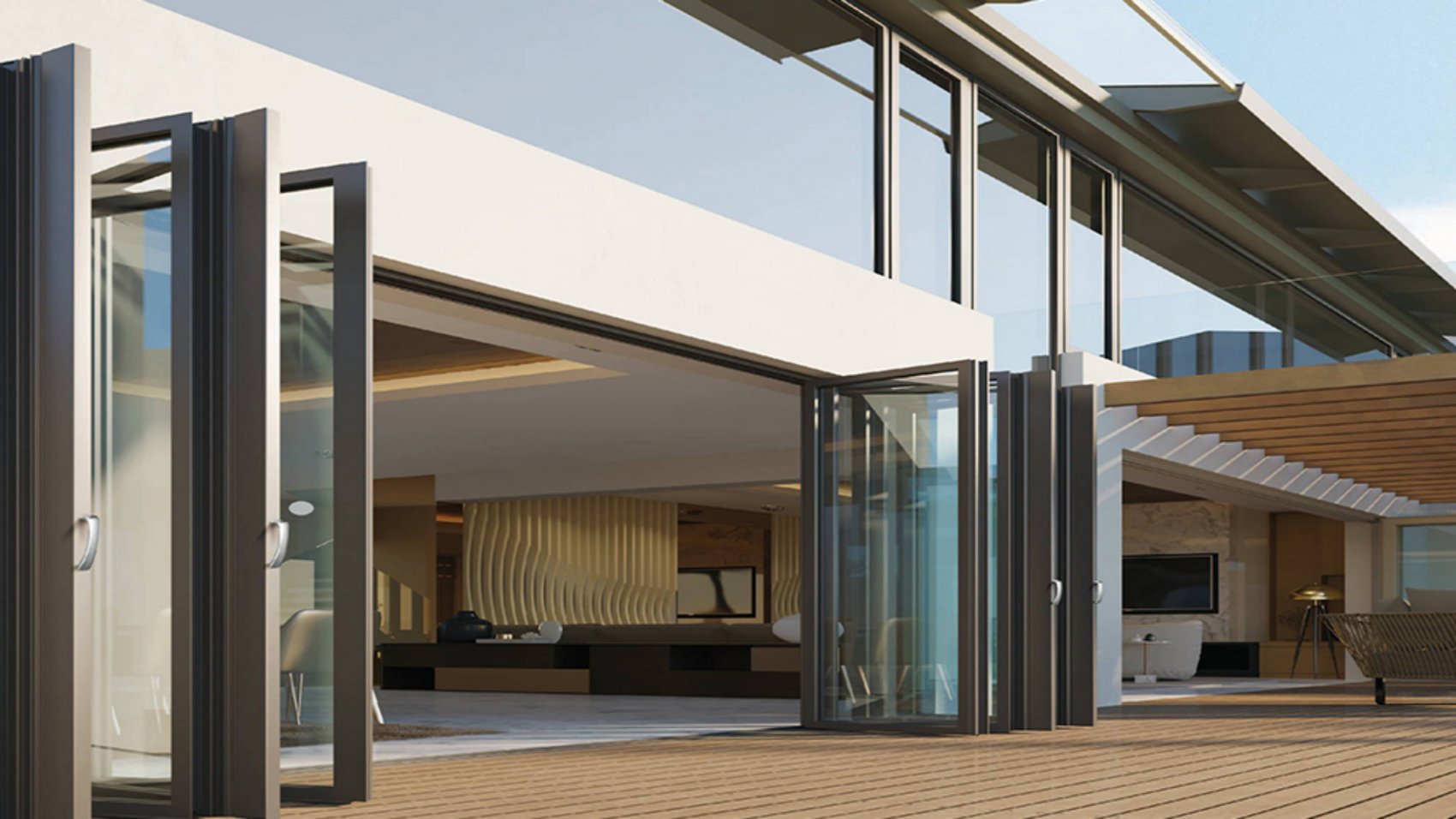Introduction
In the field of modern architecture, the building curtain wall, as an important part of the building's exterior facade, not only undertakes the enclosure function but also largely shapes the appearance and style of the building. Aluminum alloy profiles, with their unique performance advantages, have been widely used in building curtain walls and have become one of the key materials promoting the development of the building curtain wall industry.
Advantages of Aluminum Alloy Profiles in Building Curtain Walls
Excellent Mechanical Properties
Aluminum alloy profiles, through specific processing techniques, possess high strength and good toughness. Their strength can meet the requirements of wind loads, self-weight loads, etc. that building curtain walls bear under different climatic conditions and building heights. Compared with traditional building materials such as wood and ordinary steel, aluminum alloy profiles are lighter in weight while ensuring structural stability, which greatly reduces the burden on the main building structure. This is especially suitable for the curtain wall design of high-rise and super-high-rise buildings. For example, in the curtain wall projects of some skyscrapers, the use of aluminum alloy profiles enables the curtain wall structure to resist strong winds without imposing excessive pressure on the main building.
Good Corrosion Resistance
A dense oxide film can form naturally on the surface of aluminum alloy. This oxide film has excellent corrosion resistance and can effectively prevent aluminum alloy from being corroded in harsh environments such as humidity, acid, and alkali. Compared with steel, aluminum alloy profiles do not require frequent anti-corrosion treatment, reducing the maintenance cost and workload of building curtain walls. In coastal areas or regions with severe industrial pollution, the use of aluminum alloy profiles in building curtain walls can maintain the integrity and aesthetics of the appearance for a long time and extend the service life of the curtain wall. For instance, many modern buildings in coastal cities like Guangzhou and Shenzhen still maintain a good appearance after their curtain walls have used aluminum alloy profiles for many years.
Outstanding Processability
Aluminum alloy profiles are easy to be processed and formed. According to the needs of architectural design, they can be made into various complex cross-sectional shapes and size specifications through processes such as extrusion, stretching, and bending. This provides a broad creative space for architects and enables the realization of diverse building curtain wall shape designs. Whether it is a simple and smooth linear curtain wall or a dynamic curved curtain wall, aluminum alloy profiles can be perfectly adapted. For example, in some cultural and art buildings with unique shapes, the curtain walls use customized special-shaped aluminum alloy profiles, showing a unique artistic charm.
Good Thermal Insulation Performance
With the continuous improvement of building energy efficiency requirements, aluminum alloy profiles have also been significantly improved in terms of thermal insulation performance. By adopting the broken-bridge technology, that is, adding a thermal insulation strip in the middle of the aluminum alloy profile to divide the aluminum alloy profile into two parts, the inner and the outer, the heat conduction is effectively blocked, and the thermal insulation and heat preservation performance of the building curtain wall is greatly improved. This kind of broken-bridge aluminum alloy profile can reduce the energy consumption of buildings and create a more comfortable indoor environment, which is in line with the development concept of modern green buildings. Many newly built commercial buildings and residential buildings have adopted broken-bridge aluminum alloy profile curtain walls to meet energy-saving standards.
Application Cases of Aluminum Alloy Profiles in Building Curtain Walls
Shanghai Tower
As one of the landmark buildings in China, the curtain wall of Shanghai Tower makes extensive use of aluminum alloy profiles. The curtain wall system adopts a unitized aluminum alloy frame structure. The aluminum alloy profiles are carefully designed and processed with extremely high precision and quality. Through reasonable cross-sectional design and connection methods, it ensures that the curtain wall can withstand huge wind loads and seismic effects in super-high-rise buildings. At the same time, the application of broken-bridge aluminum alloy profiles effectively improves the energy efficiency of the building and reduces energy consumption. Its unique spiral ascending curtain wall shape is perfectly presented under the support of aluminum alloy profiles, demonstrating excellent architectural aesthetics and structural performance.
Sydney Opera House
The Sydney Opera House is world-famous for its unique shell-shaped design, and its building curtain wall also cannot do without the application of aluminum alloy profiles. During the construction process, aluminum alloy profiles were used to make the frame structure and decorative lines of the curtain wall. Due to the complex shape of the building, the aluminum alloy profiles have undergone special processing and customization to meet the shape and mechanical requirements of different parts. The corrosion resistance of aluminum alloy profiles ensures that the curtain wall can maintain a good state for a long time in the humid environment by the sea. At the same time, its surface is anodized, presenting an attractive metallic luster, which complements the overall artistic style of the Sydney Opera House.
Challenges in the Application of Aluminum Alloy Profiles in Building Curtain Walls
Cost Issue
Although aluminum alloy profiles have many advantages, compared with some traditional building materials, their cost is relatively high. The raw material price of aluminum alloy fluctuates greatly, and the processing technology is complex, resulting in high production costs of aluminum alloy profiles. To some extent, this limits its application in some cost-sensitive construction projects. To reduce costs, it is necessary to further optimize the production process of aluminum alloy profiles, improve production efficiency, and strengthen the monitoring and regulation of the raw material market.
Recycling Issue
With the rapid development of the construction industry, the treatment of construction waste has become an important issue. Although aluminum alloy profiles are recyclable, the recycling rate of aluminum alloy profiles in the field of building curtain walls is currently not high. On the one hand, during the demolition of building curtain walls, it is difficult to recycle aluminum alloy profiles, which requires professional equipment and technology. On the other hand, there are certain difficulties in reprocessing and quality control of recycled aluminum alloy profiles. Therefore, it is necessary to establish a complete recycling system for aluminum alloy profiles, strengthen technological research and development, and improve the recycling rate to achieve the recycling of resources.
Development Trends of Aluminum Alloy Profiles in Building Curtain Walls
High-Performance Development
In the future, aluminum alloy profiles will develop towards higher performance. By optimizing the alloy composition and processing technology, the strength, corrosion resistance, and thermal insulation performance of aluminum alloy profiles will be further improved. For example, the development of new high-strength aluminum alloy materials can ensure lightweight while being able to withstand greater loads; improving thermal insulation technology to enhance the thermal insulation effect of broken-bridge aluminum alloy profiles to meet more stringent building energy efficiency standards.
Intelligent Development
With the continuous progress of science and technology, intelligent buildings have become the development trend of the construction industry. Aluminum alloy profiles will also be combined with intelligent technologies to realize the intelligent functions of building curtain walls. For example, integrating intelligent devices such as sensors and controllers in aluminum alloy profiles can real-time monitor parameters such as the temperature, humidity, and wind pressure of the curtain wall, and automatically adjust the opening and closing of the curtain wall according to environmental changes, realizing intelligent ventilation and lighting control of the building, and improving the comfort and energy utilization efficiency of the building.
Green and Environmentally Friendly Development
Against the backdrop of the global advocacy of green and environmental protection, the application of aluminum alloy profiles in building curtain walls will pay more attention to green and environmental protection. On the one hand, strengthen the recycling of aluminum alloy profiles to reduce resource waste and environmental pollution. On the other hand, develop more environmentally friendly surface treatment technologies to reduce the emission of harmful substances during the surface treatment process. At the same time, promote the use of renewable energy to produce aluminum alloy profiles to further reduce carbon emissions and achieve the sustainable development of the building curtain wall industry.
Conclusion
Aluminum alloy profiles occupy an important position in modern building curtain walls with their excellent performance. With the continuous progress of technology and the development of the industry, their application prospects will be broader. Although currently facing some challenges, through continuous technological innovation and industrial upgrading, aluminum alloy profiles will develop towards high-performance, intelligent, and green and environmentally friendly directions, bringing more innovation and changes to the building curtain wall industry and helping modern buildings achieve higher quality and sustainable development goals.


